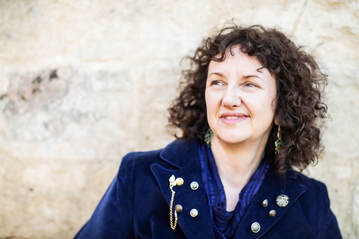INSTEAD, LET US SAY by Dawn Gorman
Winner of the Brian Dempsey Memorial Prize 2019
Instead, Let us Say is Dawn Gorman’s third pamphlet, published by Dempsey & Windle following her achievement of first place in the Brian Dempsey Memorial Pamphlet Competition in 2019. Released in September 2019 it is available from this page, from Dawn herself at readings, from Amazon.co.uk and to order from Waterstones, Five Leaves Bookshop (Nottingham), Blackwell's Bookshop (Oxford) and other independent booksellers.
|
Dawn Gorman is a freelance editor, reviewer and poetry workshop leader. She devises and runs community arts events, including the popular poetry reading series Words & Ears in Bradford on Avon, and works with poetry with the elderly and young people, with a particular interest in aural history. She collaborates widely with artists, musicians, photographers, film-makers and other writers: she has twice been a poet-in-residence at Edinburgh Fringe in collaboration with ceramicist Liz Watts, and the Orchestra of the Age of Enlightenment, together with 250 schoolchildren, wrote a symphony based on one of her poems; the overture, devised as a film poem, appeared at Cannes Short Film Festival.
Her pamphlet This Meeting of Tracks was published in New York in the four-poet book Mend & Hone, which was nominated for the Pushcart Prize. Her work has appeared in various anthologies, including: DE4 | A1 (Templar Poetry, 2016); The Book of Love & Loss (Belgrave Press, 2014); Salt on the Wind (Elephantsfootprint, 2015) and From Palette to Pen (The Holburne Museum, 2016). It has also appeared in journals including Poetry Ireland Review, Iota, Magma, The Rialto, The Interpreter’s House, Butcher’s Dog, Anima and Under the Radar, and on-line in And Other Poems and The Mary Evans Picture Library. Previous pamphlets: This Meeting of Tracks Looking for gods |
|
Neil Leadbeater reviews "Instead, Let Us Say" [Extract from writeoutloud.net, March 2020)
"The 25 poems in this collection offer up a compassionate take on daily life with all its fleeting emotions: a father and son walking along the water’s edge, reflections on looking at a memorial spoon dated 1664, thoughts at the scene of a fatal road accident, finding meanings in foreign parts, and a meditation on the colour orange." " I read the book through twice in one sitting: pithy, moving, tightly compacted poems with a strong build-up of suspense and a real sense of urgency." — from Wendy Klein's review in thehighwindowpress.com
Review in The High Window, 2020"These are haunting poems written with seeming effortlessness, the lightest of touches, dancing off the page. This is the language, these are the idioms, of everyday life but manipulated to produce phrases, lines and images that stop us in our tracks, surprising, thought-provoking and often luminously beautiful." — Penny Sharman, reviewing in thehighwindowpress.com 2020
|
'These are haunting poems written with seeming effortlessness, the lightest of touches, dancing off the page. This is the language, these are the idioms, of everyday life but manipulated to produce phrases, lines and images that stop us in our tracks, surprising, thought-provoking and often luminously beautiful.
There is so much that Gorman is “good” at. She’s good at writing about relationships – with lovers, in particular, although there are moving poems about her daughter here too. She’s good at observing, and extracting the full emotional impact from, tiny poignant scenes – a man and child walking by the shore, the final moments of a hare… She empathises with the plight of suffering creatures and engages with our threatened planet, hearing the “silence howl”. She uses prompts from the world of art and – as in all powerful ekphrasis – takes us to places where we never expected to go, a piece of sculpture evoking the memory of her child, all elbows and knees, butting up against her in the womb …'
— Ruth Sharman (full review in The High Window, December 2020.)
There is so much that Gorman is “good” at. She’s good at writing about relationships – with lovers, in particular, although there are moving poems about her daughter here too. She’s good at observing, and extracting the full emotional impact from, tiny poignant scenes – a man and child walking by the shore, the final moments of a hare… She empathises with the plight of suffering creatures and engages with our threatened planet, hearing the “silence howl”. She uses prompts from the world of art and – as in all powerful ekphrasis – takes us to places where we never expected to go, a piece of sculpture evoking the memory of her child, all elbows and knees, butting up against her in the womb …'
— Ruth Sharman (full review in The High Window, December 2020.)


